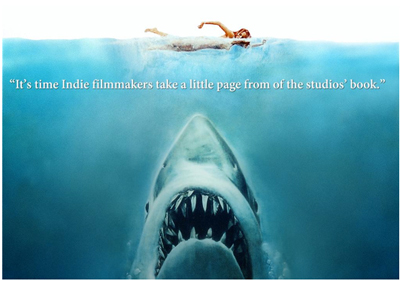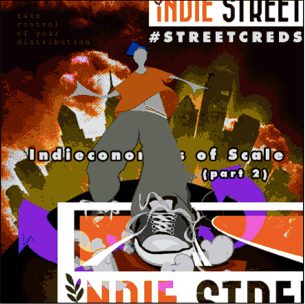By Jay Webb

Previously: What Are Films Without An Audience?
 A large portion of our population has thankfully grown past the phase of only wearing bracelets to feel like we are agents of change in our world or society. Today the world is small enough and access is great enough for every individual to truly make small changes that can accumulate to create huge impact on life and planet. Filmmakers are some of the most dynamic multi-taskers of our world society, and on top of that they already have a solid medium with audiences they can inspire to make important world changes.
A large portion of our population has thankfully grown past the phase of only wearing bracelets to feel like we are agents of change in our world or society. Today the world is small enough and access is great enough for every individual to truly make small changes that can accumulate to create huge impact on life and planet. Filmmakers are some of the most dynamic multi-taskers of our world society, and on top of that they already have a solid medium with audiences they can inspire to make important world changes.
With most all film projects, a director must envision some type of change he/she wants to inspire in the film’s eventual audience. Whether it is changing their perspective, making them laugh, or giving them insight into the world around them, your story should have a designed emotional shift for those you share it with. Having a grasp on this desired viewer transformation not only helps a filmmaker determine their core audience, but might also lead toward partners that will help to champion the film and build a larger base of fans for the future; not to mention it might do some good to your world.


 Do you want your film to change the world? Do you want to make money so you can make your next film? Do you have something to prove to yourself? An honest answer in the early stages can do wonders for a filmmaker in finding a workable distribution path, uncovering a forthright story, and figuring out an appropriate amount of money and energy to expend on the project. (Please note: An answer like “I am creative and want to express myself” misses the scope. This is a reflective question for professionals or budding professionals who live in the reality of scarce resources and time who will express themselves creatively regardless of their path).
Do you want your film to change the world? Do you want to make money so you can make your next film? Do you have something to prove to yourself? An honest answer in the early stages can do wonders for a filmmaker in finding a workable distribution path, uncovering a forthright story, and figuring out an appropriate amount of money and energy to expend on the project. (Please note: An answer like “I am creative and want to express myself” misses the scope. This is a reflective question for professionals or budding professionals who live in the reality of scarce resources and time who will express themselves creatively regardless of their path). The death of the indie video store is imminent. At least that’s what everyone tells me. Working as a video store clerk in one of a handful of stores (Queen Video) in Toronto is both a blessing and a burden. While the job remains interesting, I’m continually receiving remarks about how great it is that we’re still open. In the wake of the Blockbuster collapse, the independent video store flourished. Business seemed better than usual around late 2011 when the last Blockbusters were closing down in Canada. At that point in time, Netflix had already arrived, and streaming was still popular, but for some reason many people did not want to let go of the video store experience.
The death of the indie video store is imminent. At least that’s what everyone tells me. Working as a video store clerk in one of a handful of stores (Queen Video) in Toronto is both a blessing and a burden. While the job remains interesting, I’m continually receiving remarks about how great it is that we’re still open. In the wake of the Blockbuster collapse, the independent video store flourished. Business seemed better than usual around late 2011 when the last Blockbusters were closing down in Canada. At that point in time, Netflix had already arrived, and streaming was still popular, but for some reason many people did not want to let go of the video store experience.  After discussing Indieconomies of scale and the benefits of adopting a cooperative group approach, we thought it might be a good time to switch the charge and talk a bit more about the challenges (potholes) that we have come across to date. If a pothole doesn’t swallow you, it makes your vehicle stronger.
After discussing Indieconomies of scale and the benefits of adopting a cooperative group approach, we thought it might be a good time to switch the charge and talk a bit more about the challenges (potholes) that we have come across to date. If a pothole doesn’t swallow you, it makes your vehicle stronger. 
 When considering how to apply business concepts like economies of scale to Independent film, in the case of production we have to reorganize our thought process a little. In this post, we start by treating a small group of Indie filmmakers as a story producing company with each member having both objective story telling capital (skillset, equipment, etc.) and subjective story-telling capital (interest in project, loyalty, emotional connection to material). The more story-telling capital that can be attained through cooperation, the more a group can benefit from production Indieconomies of scale.
When considering how to apply business concepts like economies of scale to Independent film, in the case of production we have to reorganize our thought process a little. In this post, we start by treating a small group of Indie filmmakers as a story producing company with each member having both objective story telling capital (skillset, equipment, etc.) and subjective story-telling capital (interest in project, loyalty, emotional connection to material). The more story-telling capital that can be attained through cooperation, the more a group can benefit from production Indieconomies of scale.